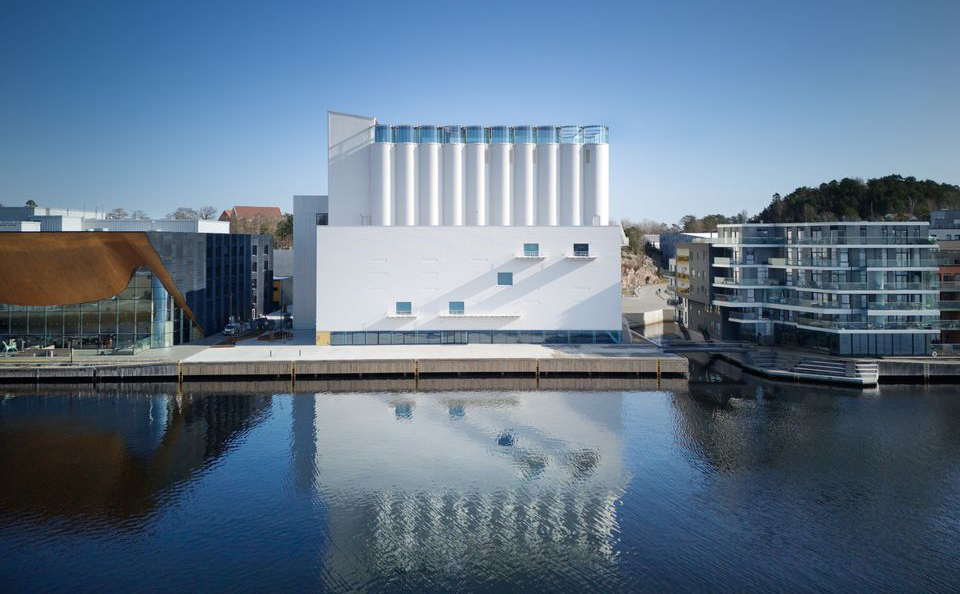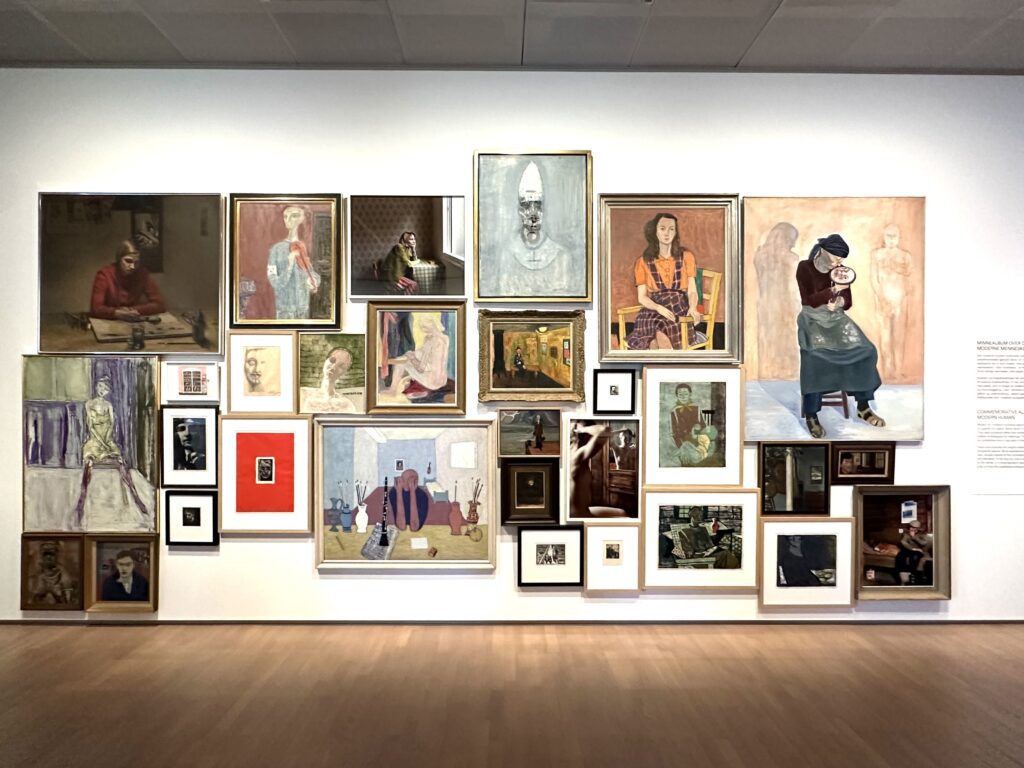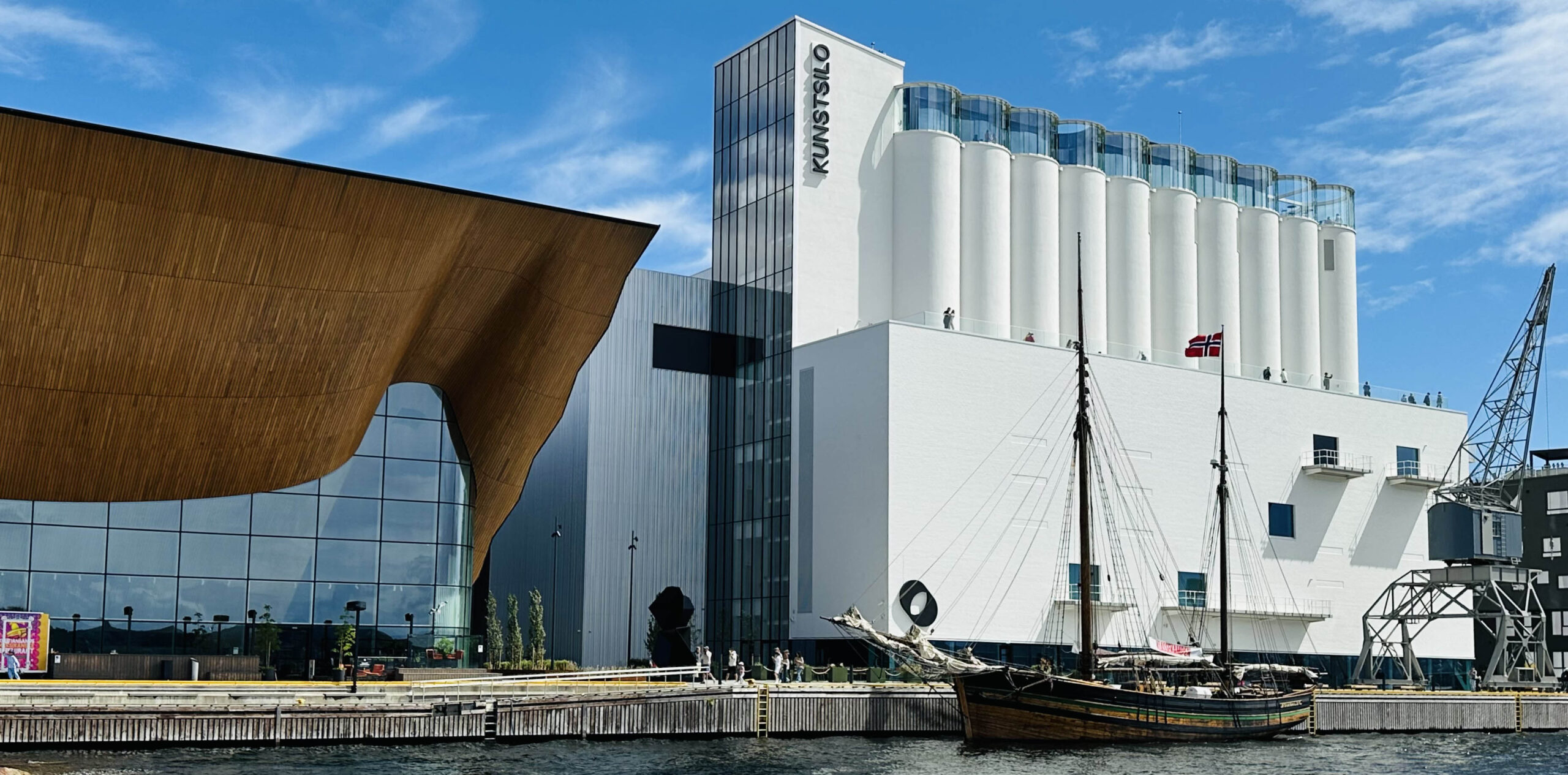Located in the city of Kristiansand, Kunstsilo Museum is one of Norway’s most innovative and ambitious modern art museums. With its striking architecture and carefully curated art collection, the museum aims to represent the regional art scene on a global scale.
Today, Kunstsilo houses the largest private collection of modern art in Northern Europe. Originally designed in 1935 as a grain silo by Norwegian architects Arne Korsmo and Sverre Aasland, the building is a prime example of the functionalist architectural movement of its time, characterized by simple, clean lines and the rhythmic arrangements of silos.

During the museum’s transformation, the goal was to preserve and celebrate the architectural essence of the former grain silo. Architects Mestres Wåge Arquitectes and Mendoza Partida proposed hollowing out the 37-meter-high silo cylinders to create a magnificent basilica-like atrium that rises to a height of 21 meters. With this approach, the silos, which are central to the building’s character, were placed at the heart of the museum’s design. The remaining silo cylinders now form a ceiling that captivates visitors as a kind of sculpture. The galleries are arranged around this expansive atrium, with openings in both the atrium-facing interior walls and the exterior facade. These openings are intended to guide the visitors within the space. They also create a connection between the building’s industrial interior and its surrounding environment. In addition to the galleries, the building also houses offices and a cultural school for local children. On the second floor, a digital gallery featuring floor-to-ceiling projections aims to make Kunstsilo more accessible to a wider audience.

The architects designed several viewing points across different floors of the building, offering panoramic views of the surrounding peninsula. Additionally, the building’s rooftop features an open-air exhibition space and a bar, designed as a viewing terrace. This terrace, aligned with the wavy exterior of the silos, is enclosed by glass cylinders reminiscent of a lighthouse. The project also includes an open-air exhibition space at ground level, where visitors are welcomed without tickets or entry fees.

The preserved industrial architecture of the building is complemented by what the architect describes as “passive architectural touches,” both inside and outside the museum. The additions to the exterior were inspired by the silo’s silhouette, while the interior retained the rough concrete walls, visible mold marks, surfaces worn by grain, and saw marks on the cut cylinders. This approach creates a contrast between the new architectural elements and the old structure, giving the space its unique character through the interaction of these two distinct architectural aesthetics.

Kunstsilo is the latest example of cultural buildings transformed from existing industrial structures. Other examples include Tate Modern in London, housed in the Bankside Power Station, Plato Contemporary Art Gallery in Ostrava, and Zeitz MOCAA, South Africa’s largest art museum, also located in a grain silo. According to Kunstsilo’s architect Wåge, the reason behind this trend is the potential of industrial buildings to provide a compelling backdrop for art. The spatial qualities of industrial buildings make them particularly suitable for hosting and displaying contemporary art, while reinterpreting an existing structure offers creative opportunities in museum design.

The museum spans three floors, with 25 galleries covering a total of 3,300 square meters, showcasing works by over 300 artists from Finland, Denmark, Iceland, Sweden, and Norway, dating from the 1910s to the 1990s. It also houses the Sørlandets Art Museum (Sørlandets Kunstmuseum) and the Tangen Collection, which is promoted as the world’s largest private collection of Nordic art. Assembled by Kristiansand-born Nicolai Tangen, this collection includes approximately 5,500 works tracing the development of Nordic art from the 1920s to the 1990s.

An impressive example of both historical preservation and innovative architecture, Kunstsilo is a must-visit! It’s the perfect destination to explore the world of Nordic art while experiencing a unique architectural marvel

